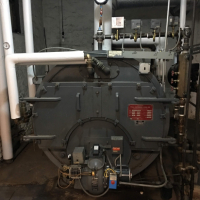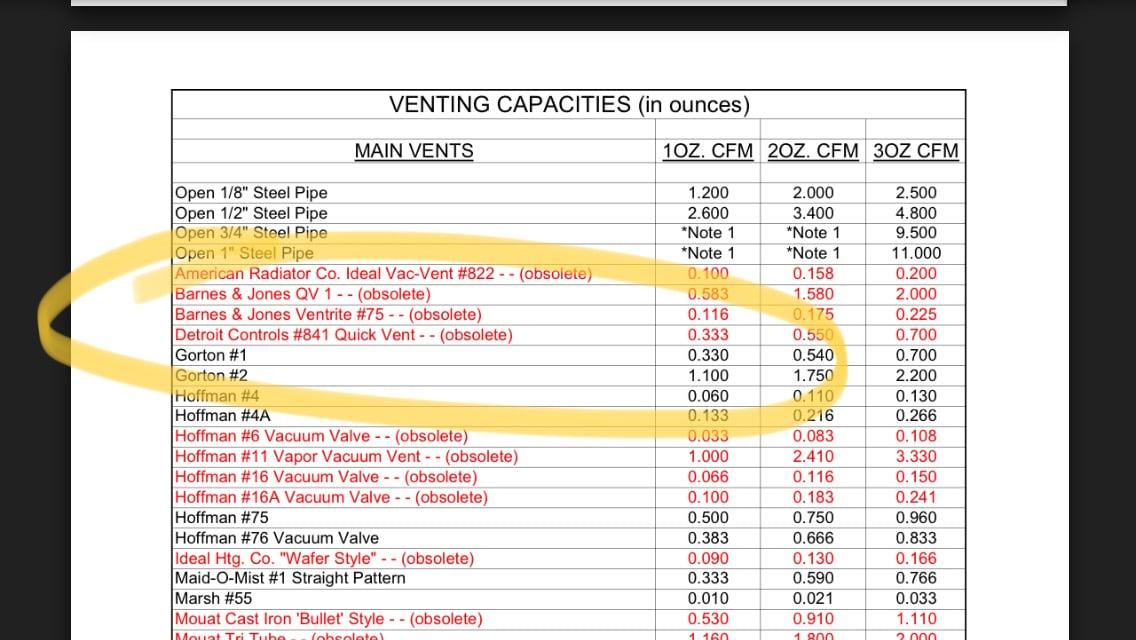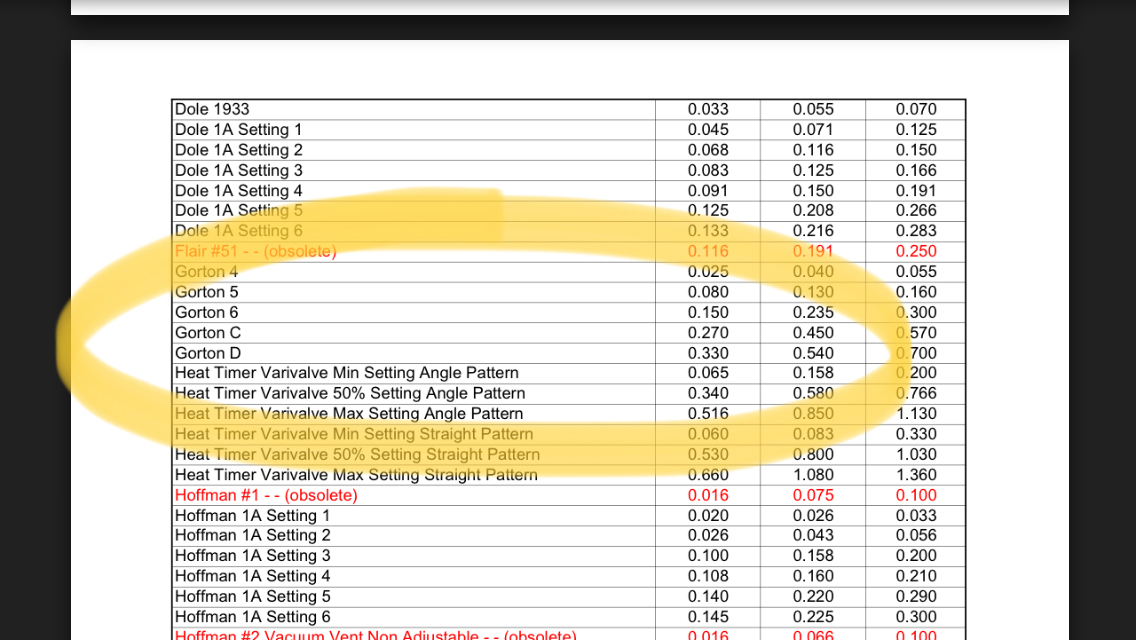Welcome! Here are the website rules, as well as some tips for using this forum.
Need to contact us? Visit https://heatinghelp.com/contact-us/.
Click here to Find a Contractor in your area.
If our community has helped you, please consider making a contribution to support this website. Thanks!
Venting on riser
Options

eappleton
Member Posts: 111
I have a question about venting risers. Briefly, do Gorton D's vent at the same capacity as Gorton Air Eliminator #1s?
We have a single pipe steam system in a four story coop building. Over the last few years, we have increased venting in the basement with Gorton #2s in a few locations. We're finally getting around to increasing venting on the risers in the 4th floor apartments. The risers currently have radiator valves in various states of repair. Some are probably painted shut. Some are behind cabinets. All are apartments and not everyone is enthusiastic about letting us in. We're starting in the apartment of a willing member. Our plan is to replace each riser's radiator valve with a Gorton #1. But I looked at Gill/Pajek venting chart and see that the D and #1 vent at the same rate. Really? Is my plan totally off base? I can't imagine Ds hanging off pipes in people's apartments.
Thanks,
Eric


We have a single pipe steam system in a four story coop building. Over the last few years, we have increased venting in the basement with Gorton #2s in a few locations. We're finally getting around to increasing venting on the risers in the 4th floor apartments. The risers currently have radiator valves in various states of repair. Some are probably painted shut. Some are behind cabinets. All are apartments and not everyone is enthusiastic about letting us in. We're starting in the apartment of a willing member. Our plan is to replace each riser's radiator valve with a Gorton #1. But I looked at Gill/Pajek venting chart and see that the D and #1 vent at the same rate. Really? Is my plan totally off base? I can't imagine Ds hanging off pipes in people's apartments.
Thanks,
Eric


Single-pipe steam | 24 apartment, self-managed coop | Federal FST-40 Scotch Marine boiler | Carlin 701CRD burner | Heat Timer EPU-CH | Honeywell pressuretrols | Heating oil #2 (20% bio)
0
Comments
-
Actually, tapping them into the riser works well. Click on our Find a Contractor ad to see an example.All Steamed Up, Inc.
Towson, MD, USA
Steam, Vapor & Hot-Water Heating Specialists
Oil & Gas Burner Service
Consulting0 -
Why not-they are good looking and effective. You mention Gorton #2’s at various locations in the basement-they are best located all on the drops from dry return down to wet return.
In spite of advice to the contrary, I have had luck with putting Gorton D’s directly on the radiators on the top floor, with no ill effects. That might look more normal to the residents.
Those resdents who refuse these changes, will find themselves colder than before with the difference in timing of steam arrival between well vented and unvented risers.
What sort of control system do you have?—NBC
I should also say that in my 55 rad system, the pressure is very low, and my venting takes place at under 2 ounces.0 -
Thanks for the quick responses. We have a blue Heat Timer panel with a return heat system sensor. We're running at about 1lb of pressure currently.
All of the risers that are easily accessible have radiator vents on the 4th floor. Some aren't easily available. We can do with that later. I guess the question I have is this: Should I just make sure all the valves on the risers are currently working and are D valves? Or (my current plan) should I go through and install #1s (I was under the impression that they vented more quickly)? If D's and #1s vent at the same rate, I should just add Ds, right? It would be cheaper. I see Steamhead's example. Looks good.
My #1 setup:
Single-pipe steam | 24 apartment, self-managed coop | Federal FST-40 Scotch Marine boiler | Carlin 701CRD burner | Heat Timer EPU-CH | Honeywell pressuretrols | Heating oil #2 (20% bio)0 -
Drilling and tapping for the D on the riser would work well. Another option would be to drill and tap the radiator valve side of the radiator for a second air vent. This would be the D, then your regular radiator vent can be something slower.0
Categories
- All Categories
- 87.3K THE MAIN WALL
- 3.2K A-C, Heat Pumps & Refrigeration
- 61 Biomass
- 429 Carbon Monoxide Awareness
- 120 Chimneys & Flues
- 2.1K Domestic Hot Water
- 5.8K Gas Heating
- 114 Geothermal
- 166 Indoor-Air Quality
- 3.7K Oil Heating
- 77 Pipe Deterioration
- 1K Plumbing
- 6.5K Radiant Heating
- 395 Solar
- 15.7K Strictly Steam
- 3.4K Thermostats and Controls
- 56 Water Quality
- 51 Industry Classes
- 50 Job Opportunities
- 18 Recall Announcements
